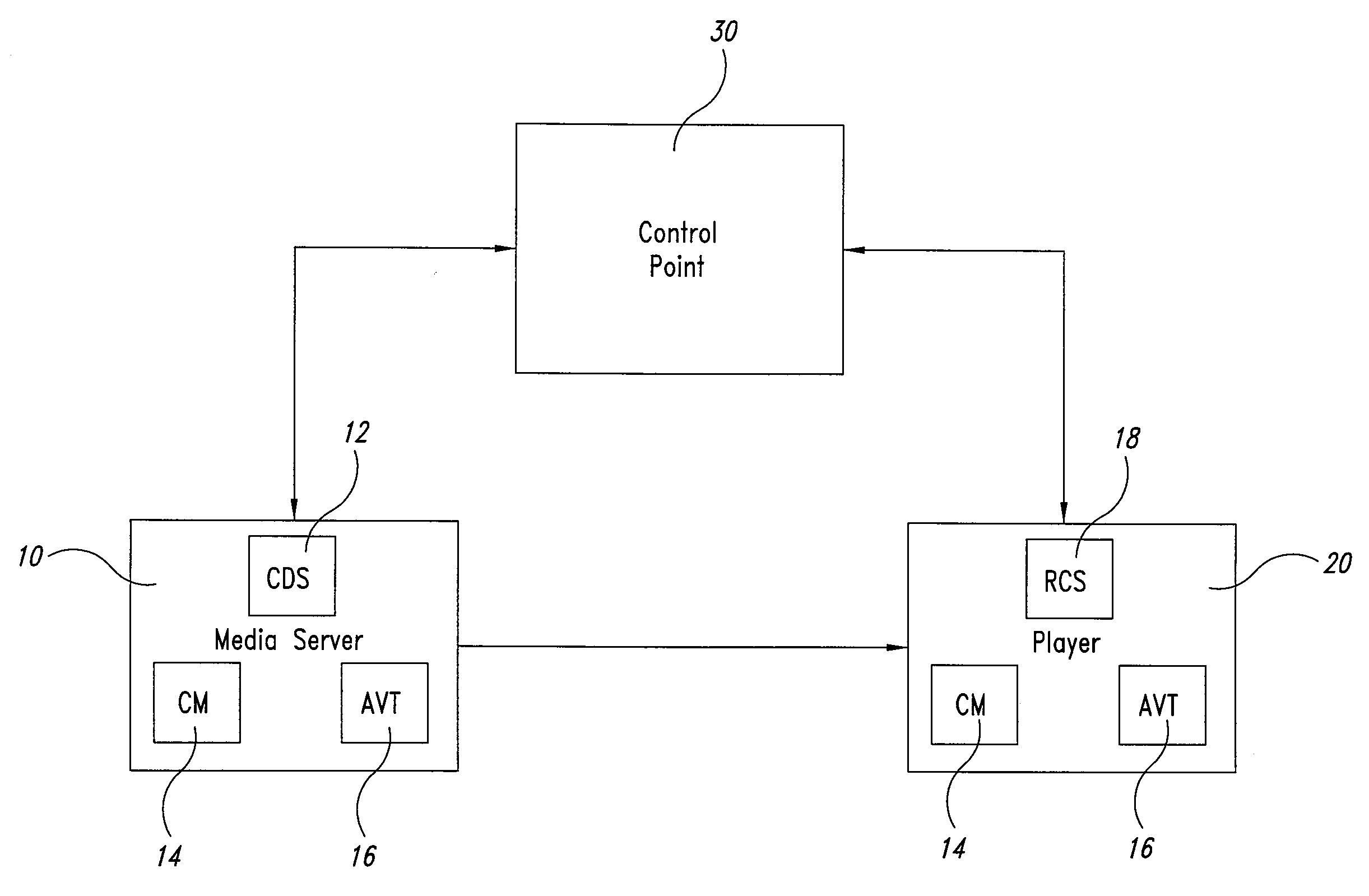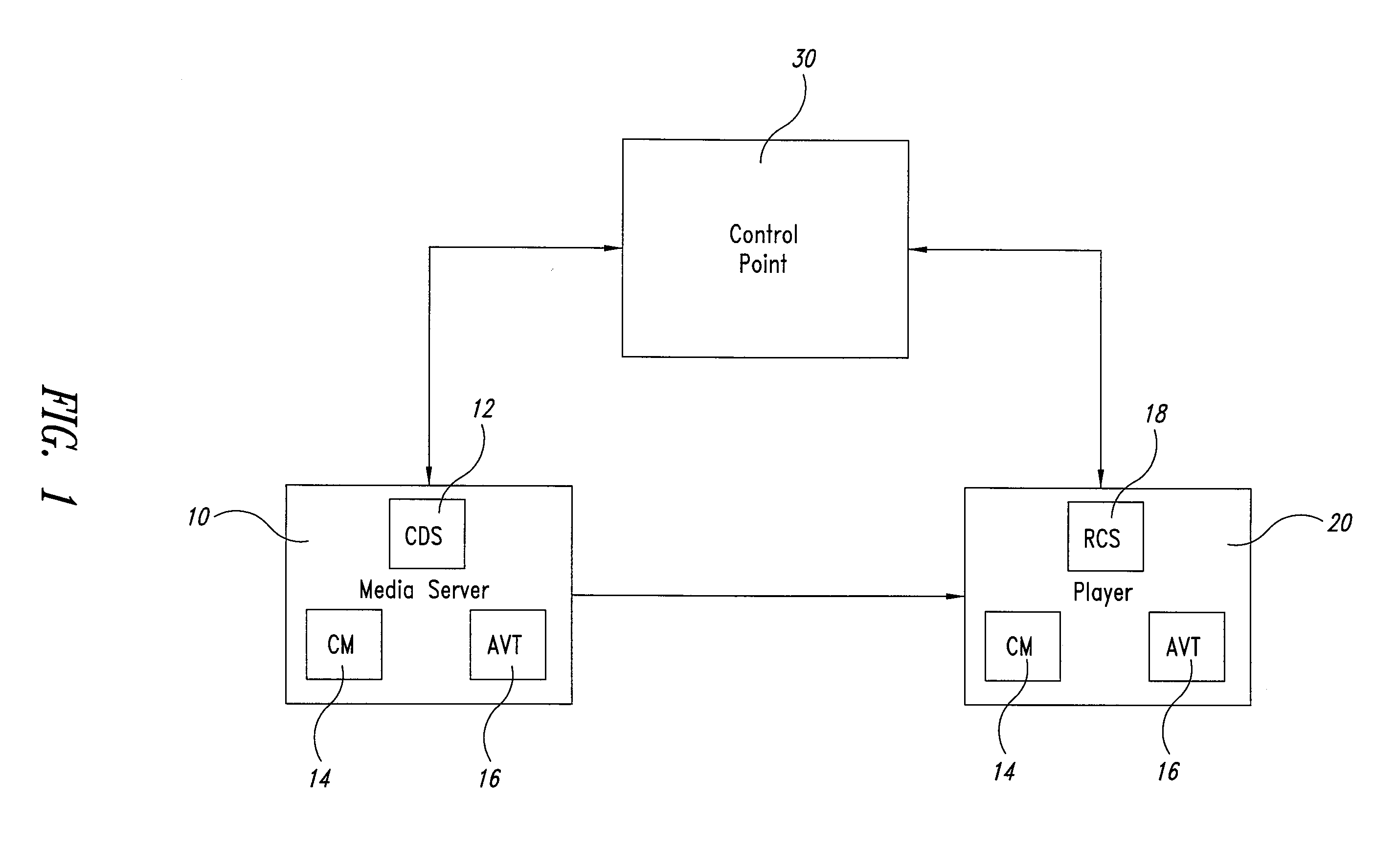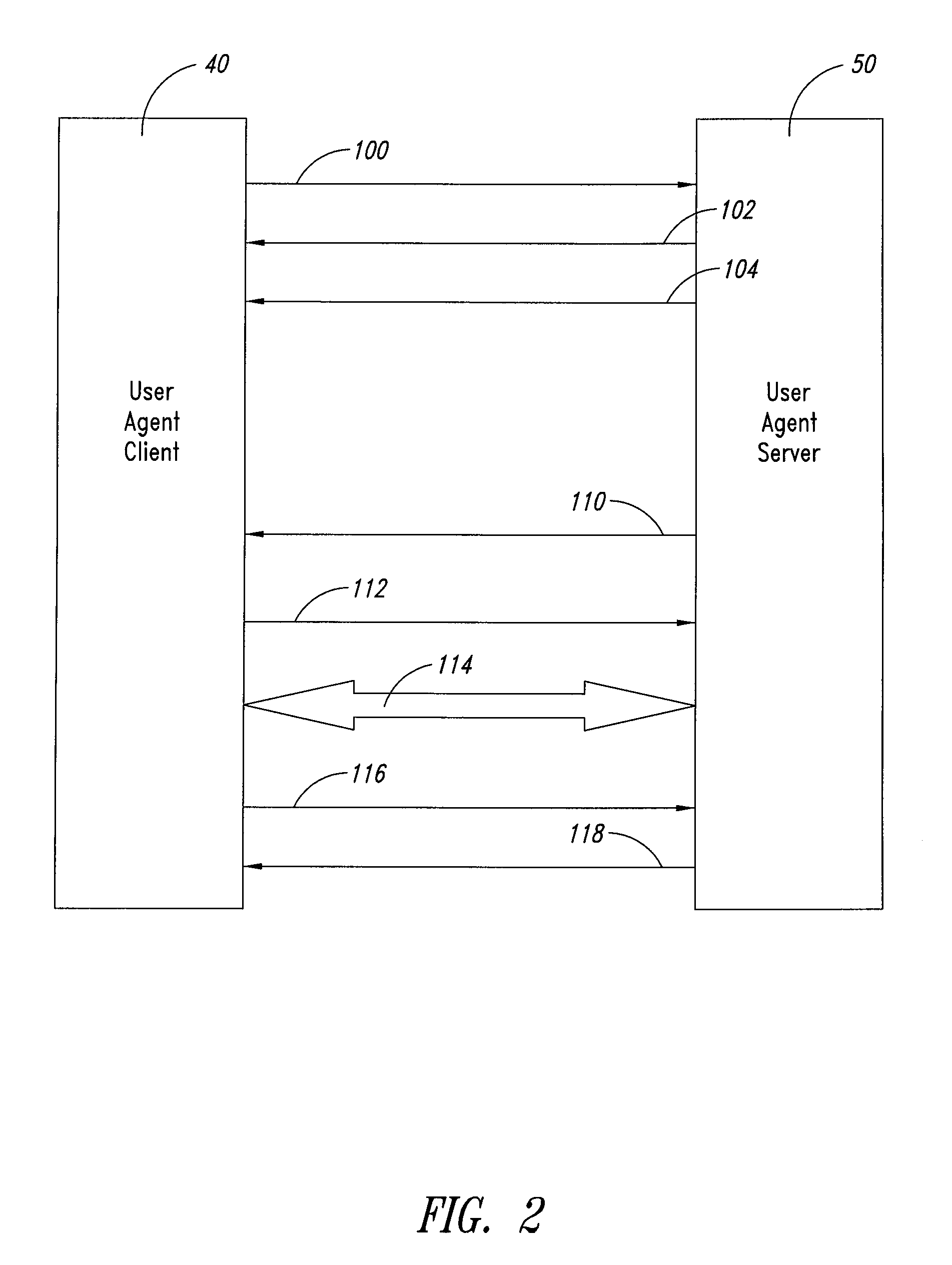Plug-and-play device for videophony applications on packet-switched networks
a packet-switched network and videophony technology, applied in the direction of transmission, instruments, electric digital data processing, etc., can solve the problems of inconvenient use, poor transmission quality, and the inability of upnp to provide developers with the starting api (application program interface) and other problems, to achieve the effect of improving performan
- Summary
- Abstract
- Description
- Claims
- Application Information
AI Technical Summary
Benefits of technology
Problems solved by technology
Method used
Image
Examples
Embodiment Construction
[0068]The audio-video architecture of FIG. 1 defines the three main logic entities that constitute an example of audio-video architecture: a communications server 10 (media source), a player 20 (media renderer or media player) and a control point 30 (media control point). Each of these entities can be considered as a single portion of equipment.
[0069]The Media Server 10 provides contents of entertainment and transmits these contents to other audio-video devices through a home network. It can be a CD or a DVD jukebox, a personal video recorder hard drive, a personal computer with an MP3 file, or a TV receiver.
[0070]The Media Player 20 receives contents external to the network and reproduces them on its local hardware. The player can be a stereo or multichannel system, a TV set, or even a set of amplified acoustic diffusers.
[0071]The control point 30 co-ordinates the operations of the Media Server 10 and of the Media Player 20 in order to fulfill and satisfy the requirements of the en...
PUM
 Login to View More
Login to View More Abstract
Description
Claims
Application Information
 Login to View More
Login to View More - R&D
- Intellectual Property
- Life Sciences
- Materials
- Tech Scout
- Unparalleled Data Quality
- Higher Quality Content
- 60% Fewer Hallucinations
Browse by: Latest US Patents, China's latest patents, Technical Efficacy Thesaurus, Application Domain, Technology Topic, Popular Technical Reports.
© 2025 PatSnap. All rights reserved.Legal|Privacy policy|Modern Slavery Act Transparency Statement|Sitemap|About US| Contact US: help@patsnap.com



